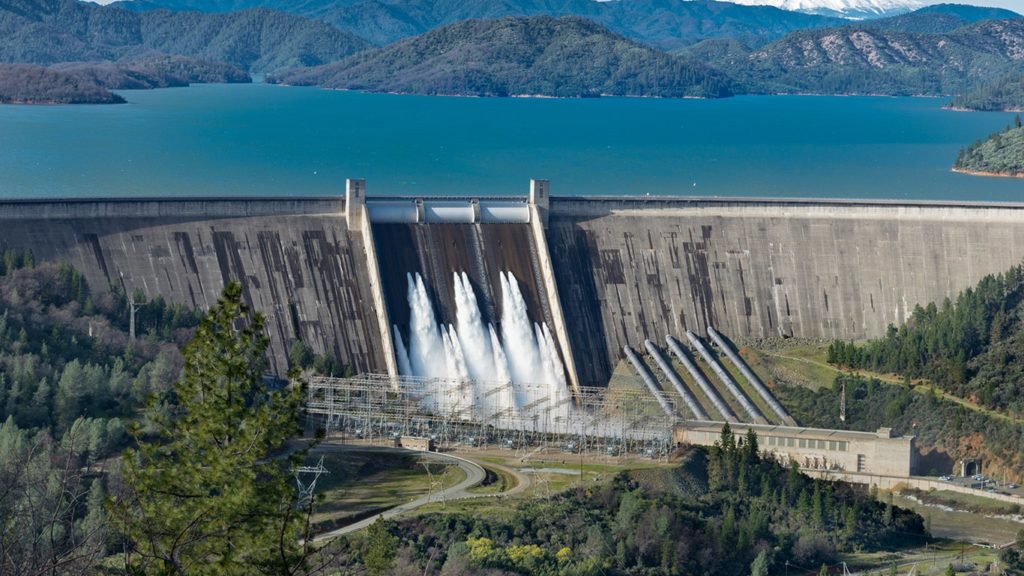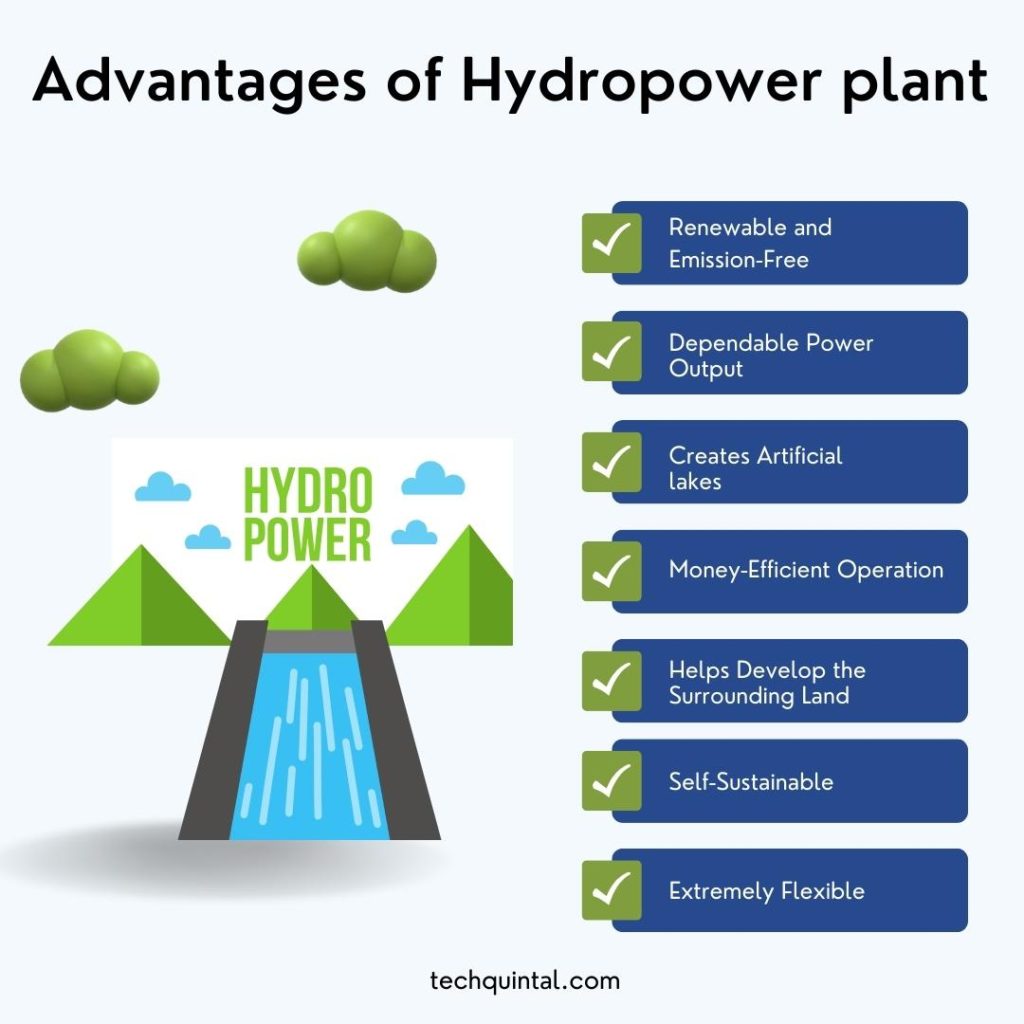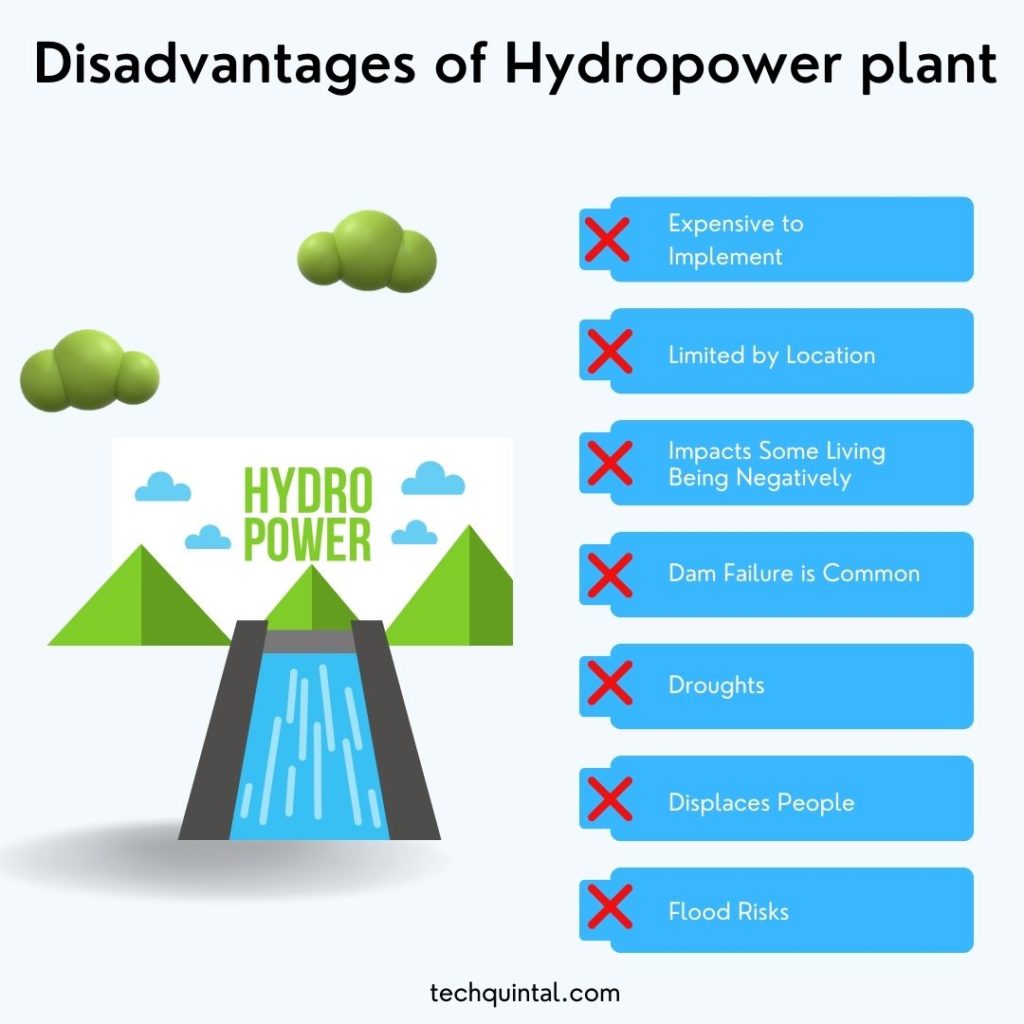
The hydropower sector generated 4,370 TW of clean electricity in 2020, according to the 2021 Hydropower Status Report. China was at the forefront with 370 GW of installed capacities, followed by Brazil with 109 GW and the United States with 102 GW. Most importantly, the method of energy production is on the upswing due to the rapid developments in the field of energy technology. Global hydropower capacity rose by 15.6 GW in 2019, by 21 GW in 2020, and is projected to continue rising almost linearly in the next few years. But because there are two sides to the coin, let’s investigate both the advantages and disadvantages of a hydropower plant.
What is a Hydropower Plant?
A Hydropower plant is a facility that uses the energy of moving water to generate electricity. People often get confused about the workings of hydropower. But it is not really rocket science.
Here is how a Hydropower Plant works: the moving water from the river leads to the turbine through a large pipe called a penstock. Then the water spins that turbine and converts the kinetic energy into mechanical energy. That spinning turbine is further connected to a generator, which converts the mechanical energy already converted into electrical energy.
Hydropower Plant is gaining popularity in creating energy as it is a renewable source of energy and does not create any pollution. It only relies on natural water to produce energy, which is an infinite resource. But one thing that goes against Hydropower plants is how expensive it is to build dams.
Building dams also disrupt the local ecosystem and displaces communities that are living around it. This is the most hated disadvantage of dams. But even after these challenges, the Hydropower plant is going to be very crucial in the future for producing energy.
Advantages of hydropower plant

We’ll start with the positives. Here are some notable advantages of hydroelectric energy:
1. Renewable and emission-free
Hydroelectric power is a renewable source of energy. In other words, as long as the water flows through the system, the power generation doesn’t stop. Additionally, there are no harmful byproducts, neither waste (one of the key disadvantages of nuclear energy) nor greenhouse gases such as nitrous oxide, tropospheric ozone, methane, or freons. Renewable energy has a lot of advantages as well as a few disadvantages.
2. Power output is dependable
We mentioned solar energy to point out the key difference. Unlike power generated by the Sun, hydro plants can operate 24/7, since they don’t depend on a night-day cycle and are thus dispatchable energy sources.
Additionally, the water flow can be slowed down or sped up using turbines, meaning the hydropower output is adjustable. The backup power can mitigate financial and productivity disasters caused by major electricity disruptions or outages.
Furthermore, malfunctions happen less often when the system isn’t constantly pushed near a breaking point. Finally, hydropower facilities have a “lifespan” of between 50 and 100 years. So, hydro technology can easily outshadow the benefits of solar energy.
3. Operation is money-efficient
Hydropower plants utilize pumped hydroelectric energy storage (PHES) for load balancing to boost money efficiency. To clarify, hydroelectric energy can be stored as potential gravitational energy, pumped from the lower to the higher-elevation reservoir. Pumps that do this usually operate only during off-hours.
When there’s a need to meet peak energy demands, the pumped water is released through the turbines, generating extra electricity. Although this makes plants energy consumers, not solely generators, they gain revenue by selling electricity at a higher cost during peak hours.
Additionally, PHES can accept energy from other renewable sources such as solar, wind, and nuclear, and even the surplus of traditional energy production such as coal.
4. Creates artificial lakes
Dams, the foundation of hydropower plants, can be placed on natural or artificial bodies of water, usually rivers. There are also plans to create mega-dams on the sea. Whatever the case may be, their inception led to the creation of artificial lakes.
From a strictly naturalistic point, it prompts the introduction or propagation of new plant and fish species, and by proxy, increases the wooded area and thus produces richer vegetation, which brings improvements to habitats for animals, especially birds.
5. Helps develop the surrounding land
The inception of hydro plants boosts the economy of the land nearby. First of all, if the transportation infrastructure doesn’t exist, the country must build it. The housing for everyone partaking in the building is next in line, which often spirals into the creation or expansion of a nearby village or town when hydro plant employees arrive.
Moreover, the plant’s reservoir e.g., the artificial lake, often becomes the country’s tourist spot and leads to the creation of parks, swimming, boating, and fishing spots, hiking trails, etc.
6. Provides other benefits to humanity
Hydropower generation plants, besides generating electricity, can help with irrigation support during periods of long droughts. Placing a dam over a body of water also helps with flood control or elimination by draining marshy land. Additionally, rivers and artificial lakes can provide clean washing and drinking water.
Finally, the sea dams are one of the proposed megaprojects that can skyrocket power production while offsetting the effects of climate change.
7. Self-sustainable
Most of the hydropower plants depend on local resources available within the state itself, making sure that the state or country doesn’t have to depend on external resources. This will not be the case for smaller regions where there are no available water sources powerful enough to generate electricity. However, for most places where hydropower is a thing, this will be the case. Being able to produce energy domestically is a literal dream of every country.
8. Extremely flexible
Hydropower plants are extremely flexible when it comes to power generation. Given that they were built comparatively recently, most of them could go from zero to the maximum production capacity within a matter of seconds.
Whenever there is a need for extra energy, the amount of effort required to make that possible is extremely low compared to other forms of energy generation. It is the same for reducing the energy output as well.
Disadvantages of hydropower plant

It’s now time to turn to the disadvantages of hydropower plants:
1. Expensive to implement
While they have a long operating life, hydropower plants are exorbitantly expensive to build. Plus, they require either an existing body of water, which obviously gets rarer as more plants are built. An alternative is creating an artificial body of water, which only makes the monetary investment greater.
Nonetheless, hydropower facility capacity grows from year to year. That’s because construction introduces more jobs, and hydropower plants are run at the state level and aren’t prone to market fluctuation. This benefits the country’s economy and energy production long-term. Plus, the existing infrastructure – roads, tunnels, bridges, and dams reduces some of the upfront cost.
2. Limited by location
On top of finding a location with a sufficient volume of water, hydropower plants depend on local hydrology. They’re especially vulnerable to freezing temperatures and frequent droughts e.g., lack of precipitation, which reduce water flow or increase maintenance cost, reducing efficiency drastically.
3. Impacts some living beings negatively
The impact on surrounding life is among the advantages and disadvantages of a hydropower plant. We mentioned the positives for some living beings, but disrupting the natural water flow changes the fish migration paths, which leads to the displacement of some animals and insects, and the death of some plants.
As a result, humans whose livelihood depends on the river or the fish, plants, and animals must relocate too.
4. Dam failure is common
The law often regards dams as “installations that contain dangerous forces”. Whether the dam or one of the hydropower systems fails, usually due to neglect, poor engineering, or unexpected natural disasters, the consequences are nearly cataclysmic.
To illustrate our point, there were over 200 prominent dam failures between 2000 and 2009 alone. The consequent floods damaged housing and vegetation, injured, killed, or forced people to migrate, and caused massive financial damage. You can read more about the advantages and disadvantages of dams to understand it better.
5. Reservoirs aren’t emission-free
Gas emission is simultaneously one of the hydropower plant advantages and disadvantages. The lack thereof applies to the facility alone. However, the plants at the bottom of reservoirs decompose in time, releasing large quantities of methane and carbon dioxide into the atmosphere. Because most of the facilities rely on reservoirs, this contributes to global warming and the world’s pollution levels.
6. Droughts
There are two sides to this. Implementation of a hydropower plant requires water to be stopped/limited from flowing down the stream. This means, it could result in water scarcity in certain regions that solely depend on the river for sustaining.
On the other hand, a deficiency in the water stream due to climate change can negatively impact the energy production of the plant. So, depending completely on hydropower may not be sustainable for certain regions based on the amount of rain they receive and other similar factors.
Uses of Hydropower Plant
We have learned what a Hydropower plant really is and are also aware of how it actually works. But people are still vague about the uses of Hydropower plants. Is it only used to produce clean energy or is there still something deeply involved? Let us have a look at the most common uses of Hydropower plants:
- Renewable Energy Production: Coming to the most common cause of Hydropower Plants, they are used for producing clean and renewable energy. They produce electricity with the help of moving water. As we all know, there are no limits to moving water, and it will not deplete like fossil fuels.
- Energy Storage: You will be surprised to know Hydropower plants can be used to store energy as well during peak demand times. They do that by pumping water to a higher elevation when there is a low demand for energy and releasing it when the energy is required.
- Water Management and Irrigation Support: Hydropower plants are all about playing with the water. When a plant is managed well, it also helps with water management and controlling foods. Also, managed water can be constantly supplied for agricultural irrigation.